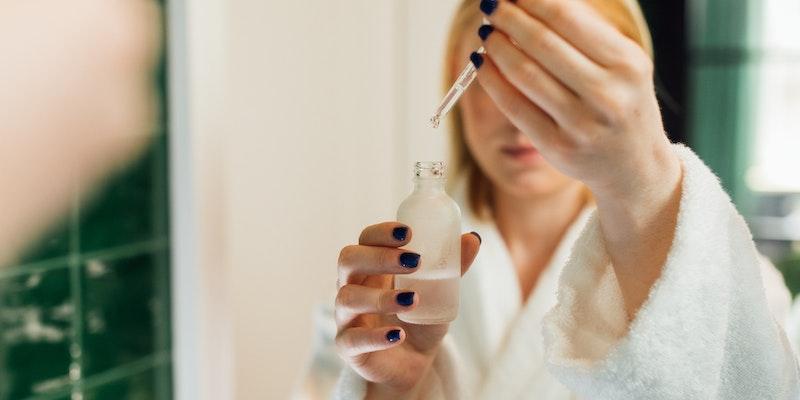Millions worldwide suffer from acne. Salicylic acid and benzoyl peroxide are popular acne treatments. Both are known for fighting acne, but they work differently. Let’s compare these two ingredients' benefits and proper use.
What Is Salicylic Acid?
Salicylic acid, a beta-hydroxy acid, comes from willow bark. This natural ingredient is a powerful chemical exfoliant that removes dead skin cells and excess oil. The salicylic acid structure and ancient use of willow tree bark for various ailments showcase the timeless nature of this ingredient.
Function
Salicylic acid structure doesn't directly fight acne. Instead, its primary role is to prevent the blockage of pores. It plays a preventive role in acne formation by actively reducing the debris on the skin that can lead to these blockages. Moreover, users often notice improved skin texture after consistent use.
Common Uses
The benefits of salicylic acid are vast, making it a staple in many over-the-counter skincare products. A notable mention is its inclusion in the Complexion Perfecting Hydrator by the Proactiv+® Acne Treatment System. In this product, the exfoliating prowess of salicylic acid is at the forefront, working meticulously to break down excess oil and dead skin.
What Is Benzoyl Peroxide?
Benzoyl peroxide stands tall as one of the pioneering ingredients in the fight against acne. Its introduction marked a significant shift in approaching acne treatment, emphasizing its importance in skincare history.
Function
Acne often results from surplus skin oil and dead skin cells, which block pores. When these stopped pores become a breeding ground for bacteria, they form inflammatory acne. Benzoyl peroxide actively pumps oxygen into these pores. Acne-causing bacteria die in this oxygen-rich environment. It also reduces acne flare-up redness and swelling as an anti-inflammatory.
Popularity
Consistent results against bacteria-induced acne and adaptability across skin types have made it a staple in acne treatments. Dermatologists and skincare enthusiasts have trusted it for years due to its efficacy.
Difference Between Salicylic Acid and Benzoyl Peroxide
Aspirin and benzoyl peroxide are popular acne treatments. Benzoyl peroxide vs salicylic acid work but approach the issue differently. Benzoyl peroxide kills acne-causing bacteria; salicylic acid unclogs pores. Knowing which ingredient works best for you is crucial since skin reacts differently to treatments. Salicylic acid and benzoyl peroxide work consistently, making them popular skincare ingredients.
Willow bark contains beta-hydroxy salicylic acid. Chemically exfoliating dead skin and oil is its primary function. This prevents acne by reducing pore blockage. On the other hand, benzoyl peroxide has long been used to treat acne. Introducing oxygen into pores makes acne-causing bacteria challenging to survive. This dual action of killing bacteria and reducing inflammation makes it a favorite for many.
When to Use The Acids

Salicylic acid is effective at preventing blackheads and whiteheads. Its ability to unclog pores makes it a popular choice for preventing these blemishes. Benzoyl peroxide fights bacteria, making it effective against severe acne, especially bacterial infections.
Salicylic acid may be best for frequent blackhead and whitehead sufferers. It exfoliates to prevent pore blockages. If you have inflamed acne or sudden pimples, benzoyl peroxide may help. It targets the benzoyl peroxide, which may help inflamed or sudden pimples. The bacteria that cause breakouts are targeted, clearing the complexion.
Combining Salicylic Acid and Benzoyl Peroxide
Salicylic acid and benzoyl peroxide are skincare staples. Both ingredients have established themselves in acne treatment. However, combining them requires strategy. Overuse can cause skin problems, especially dryness. Due to dryness, the skin produces more oil, which can increase acne. Therefore, moderation matters.
One effective strategy is to use products with one of these ingredients. This lets you control application and skin reaction. A good example is the Proactiv+® Acne Treatment System. This system cleverly uses both ingredients in separate products to keep skin hydrated and not overwhelmed.
Benefits for Different Skin Types
Skin types react differently to benzoyl peroxide vs salicylic acid skincare ingredients. Effective skin care requires understanding each skin type's needs—oily skin benefits from salicylic acid's oil-reducing properties. However, benzoyl peroxide fights acne-causing bacteria, making it a top choice for breakout sufferers. For combination skin, balancing these two ingredients can improve clarity.
Oily Skin
Sebum production is expected in oily skin. Salicylic acid's oil-dissolving properties can reduce overproduction. Regular use reduces oiliness, leaving skin matte.
Acne-Prone Skin
Periodic breakouts are awful. As an antibacterial, benzoyl peroxide targets acne's bacteria. Oxygen in pores makes bacteria struggle, reducing breakouts.
Combination Skin
Oily and dry patches require a nuanced approach. Salicylic acid and benzoyl peroxide can meet this skin type's needs. While salicylic acid controls T-zone oiliness, benzoyl peroxide treats acne-prone areas.
Precautions and Best Practices
Effective skincare requires the right ingredients and proper use. Salicylic acid and benzoyl peroxide have many benefits but must be used carefully. These ingredients can cause skin irritation and sun sensitivity if overused. Being cautious and aware of best practices can help you reap the benefits without the drawbacks.
- Before adding any new ingredient, especially active ones like salicylic acid or benzoyl peroxide, patch test, apply a small amount to a discreet area and wait 24 hours for side effects.
- Salicylic acid and benzoyl peroxide increase sun sensitivity. Daily broad-spectrum sunscreen use is essential, even on cloudy days. It prevents sunburn, premature aging, and sunspots.
- More is sometimes better. Overusing these ingredients can dry and irritate skin by stripping it of its natural oils. Following the instructions and giving your skin time to adjust is crucial.
- Dermatologists should be consulted when in doubt. Based on your skin type and concerns, they can advise you on safe and effective ingredient use.
Potential Side Effects

Every effective acne treatment has considerations and treatment options. Side effects may occur with salicylic acid and benzoyl peroxide. Skin irritation and dryness are common. Track your skin's response and adjust your routine. These ingredients require moisturizing. A good moisturizer reduces skin dryness. Consult a dermatologist if you have severe skin reactions or questions about these ingredients. They advise on skin issues and type.

What is a Posterior Pelvic Tilt
Jul 31, 2023

Are You Monitoring Blood Pressure At Home? Must Adhere To TheseGuidelines!
Nov 05, 2023

Knee Brace May Help Torn Anterior Cruciate Ligaments Heal Themselves: An Overview
Oct 18, 2023

Demystifying the Wonders of Lactic Acid in Skincare
Nov 03, 2023

6 Natural Hair Treatment Tips for Hair Growth: An Ultimate Guide
Oct 17, 2023

Best Insoles for Plantar Fasciitis
Jul 31, 2023

Understanding Different Types of Stool and Their Health Implications
Oct 20, 2023

Uncovering the Health Wonders of Watermelon
Nov 07, 2023



